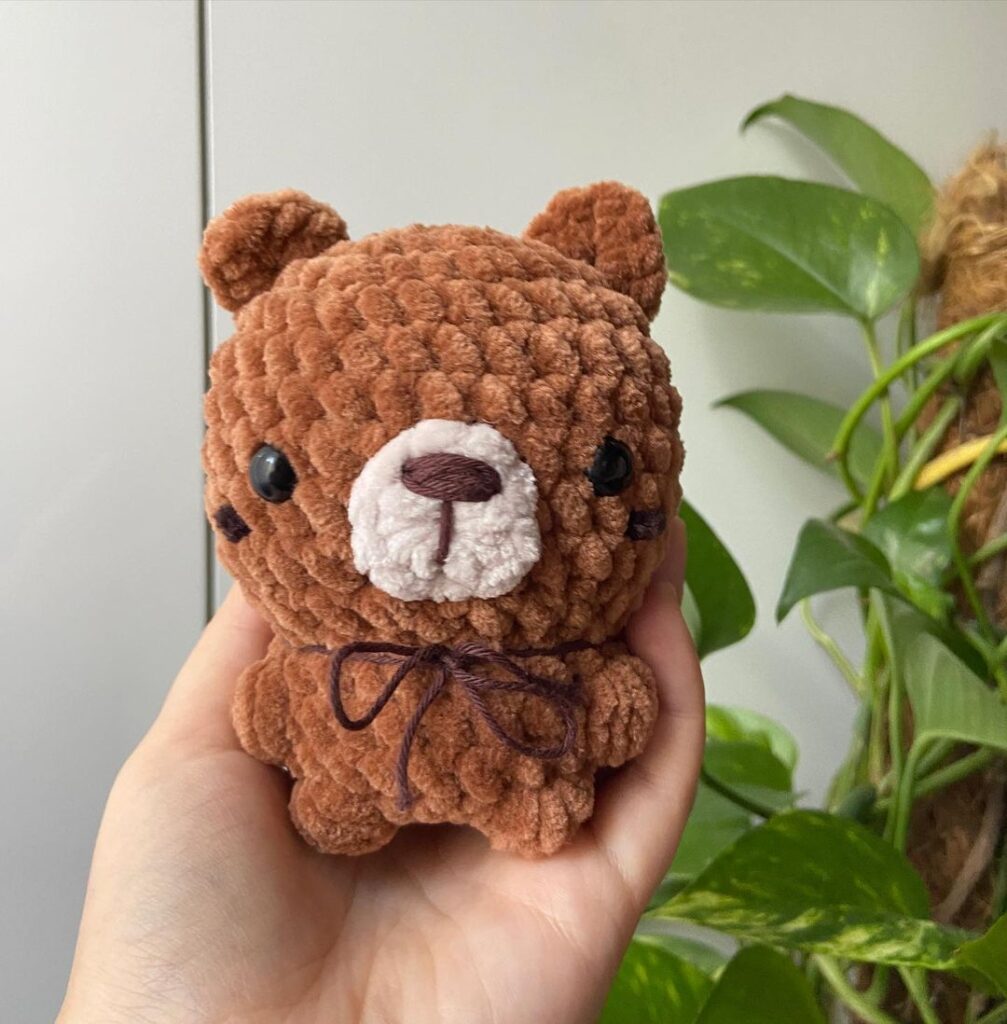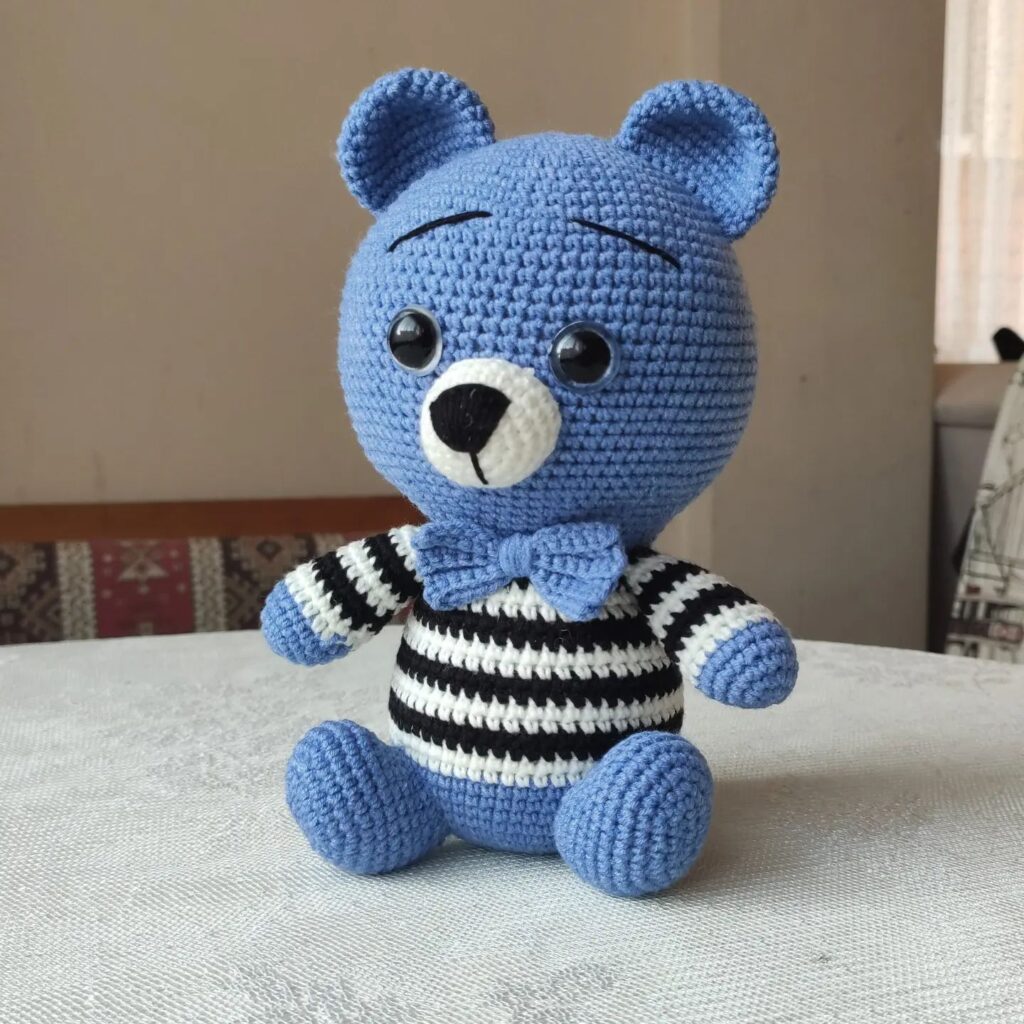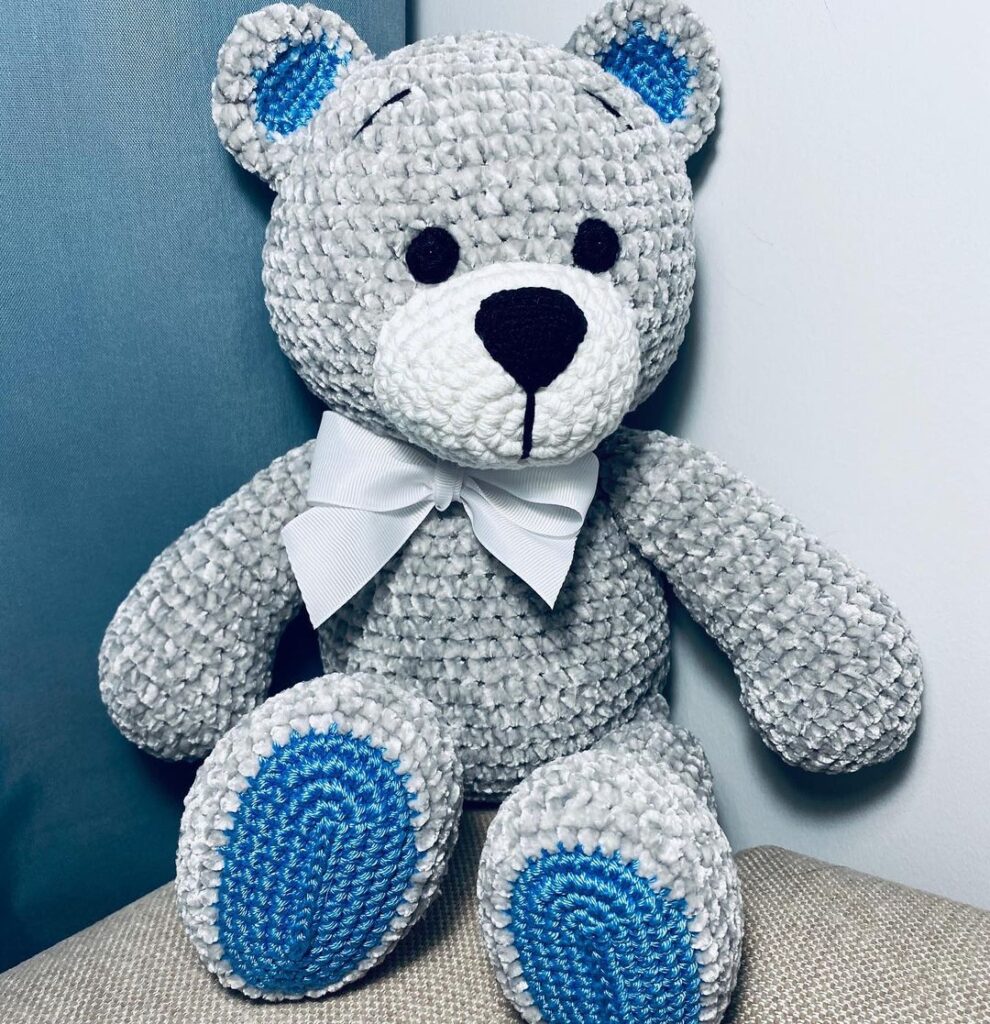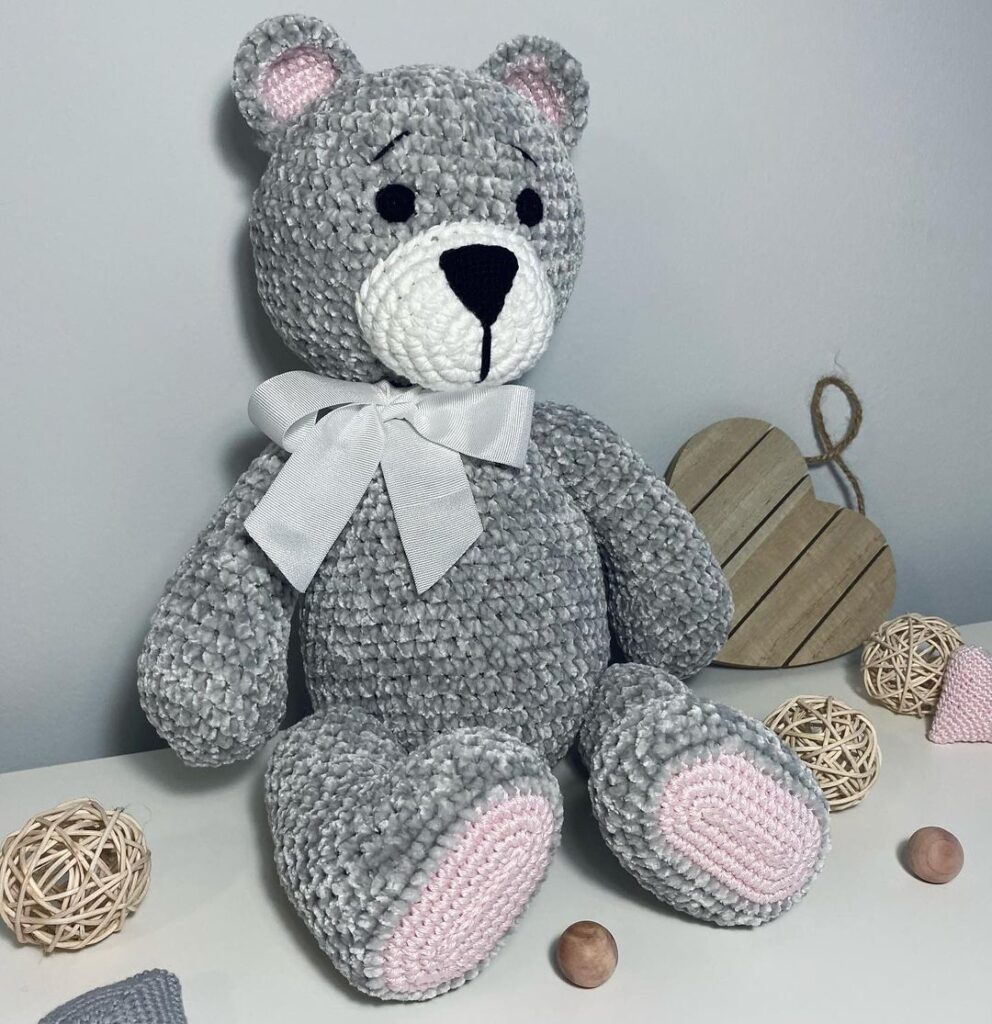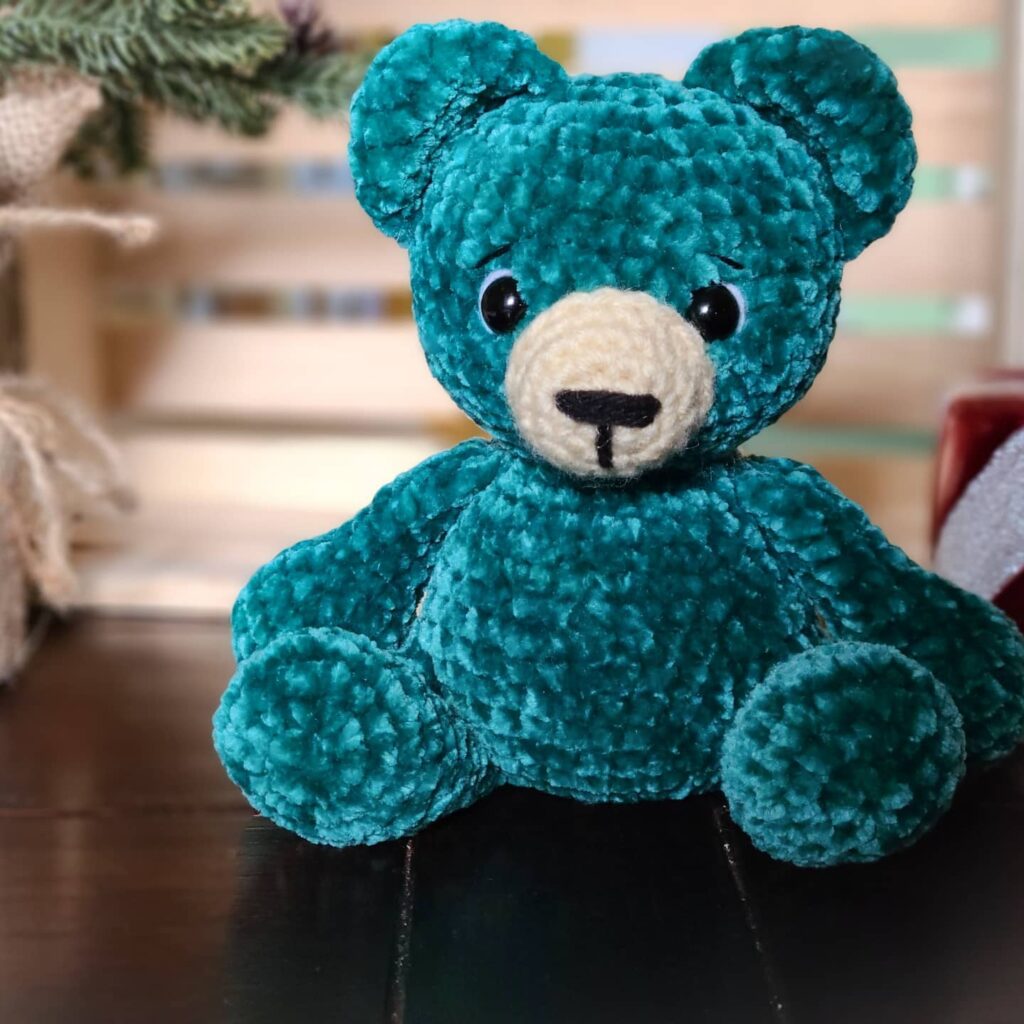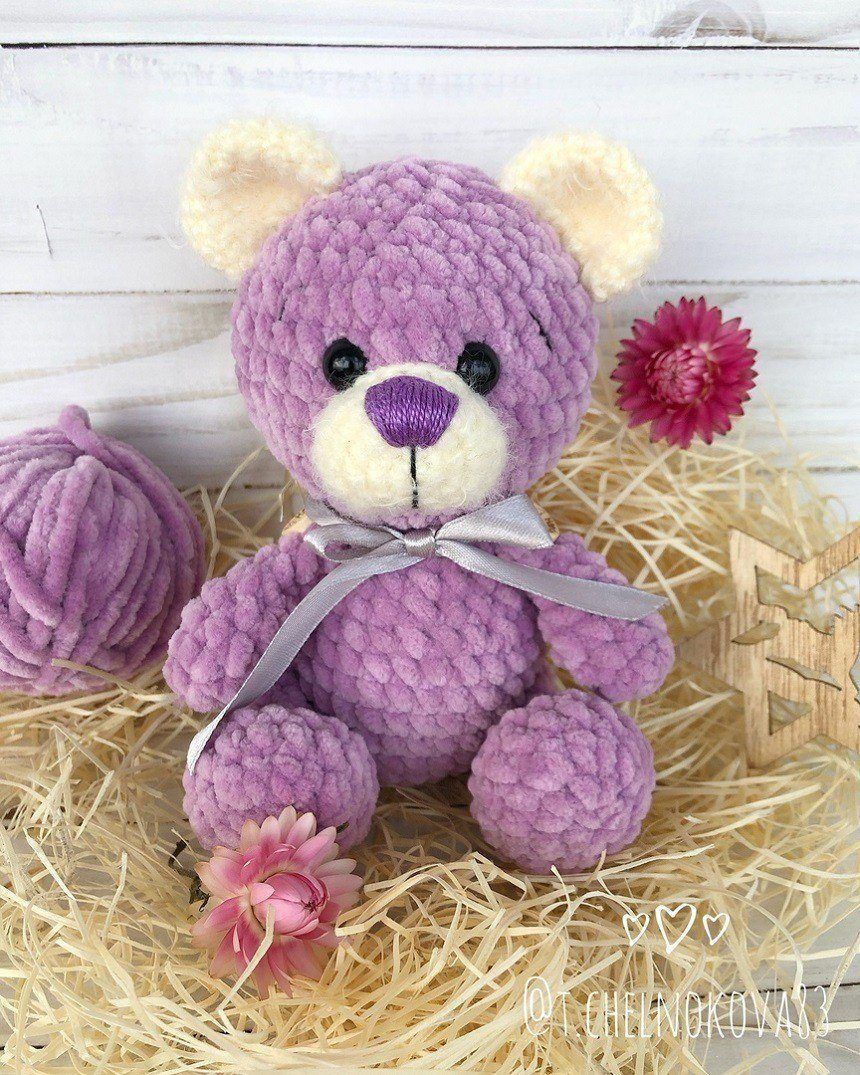Hello amigurumi lovers and beautiful visitors, I wanted to share the free amigurumi patterns for you here. In my article I will share 1 pattern and how to make it for you. At the end of my article, I will share amigurumi patterns that can generate ideas for you.
For work we need:
- Plush yarn. I use YarnArt Dolce or Himalaya Dolphin Baby (120m/100g). Approximate consumption – 50-60 grams
- Yarn Alize Softy (115 m / 50 gr), Nako Paris or any other fluffy yarn of similar thickness 10 grams per muzzle and ears
- Cotton yarn for embroidering a muzzle, tightening, sewing on paws. I use Iris PNK im. S.M. Kirova
- Spout on a secure mount, if there is no strength / desire / skills to embroider
- Hook 4-5 mm for plush yarn. Focus on your knitting density. It is necessary to choose a hook in which there will be no holes in the canvas
- Hook 2.5-3 mm for knitting muzzle and ears
- Sintepukh or other filler
- Eyes on a secure mount 10-12 mm. I use 10mm black eyes. Usually, what is at hand is used. Next is improvisation.
- 4 buttons for button fastening paws 12-13 mm
- Thin fishing line for button fastening
- Needle with a thick eye for sewing on details. It is important that the eye of the needle passes through the holes in the buttons.
Important note! The yarn consumption indicated above is very subjective and depends on the density of knitting, which is individual for everyone.
Legend:
KA – amigurumi ring Sbn
– single crochet
PSSN – half double crochet
Pr – increase, that is, we knit 2 sbn from one column Dec
– decrease, that is, we make one from two columns
The number of loops that will eventually turn out is indicated in brackets in a row.
All parts, without exception, are knitted in a spiral.
We knit all the columns for both slices of the columns of the previous row.
Exception: using the method of invisible reductions, moving from the torso to the head.
I recommend using the invisible reduction method:
Forepaws (2 parts)
Left foot:
Yarn of the main color.
1 row: 6 sc in KA (6)
2 row: (sc, inc) x 3 times (9)
3-4 row (2 rows): 9 sc (9)
5 row: 3 dec, 3 sc (6)
6 -8 row (3 rows): 6 sc (6)
Right foot:
Yarn of the main color.
1 row: 6 sc in KA (6)
2 row: (sc, inc) x 3 times (9)
3-4 row (2 rows): 9 sc (9)
5 row: 3 sc, 3 dec (6)
6 -8 row (3 rows): 6 sc (6)
We do not stuff the paws, fold them in half and connect 3 sc.
We fix the thread and hide the tip inside the paw.
Hind legs (2 parts)
Yarn of the main color:
1 row: 6 sc in KA (6)
2 row: inc x 6 times (12)
3 row: 3 inc from PSSN, 3 sc, 3 inc from PSSN, 3 sc (18 )
4-5 rows (2 rows): 18 sc (18)
6 row: dec x 4 times, 8 sc, dec (13)
7 row: dec x 3 times, 7 sc (10)
8-10 row (3 rows ): 10 sbn (10)
We fill the paws with sintepuh up to about 6-7 rows.
11th row: dec x 5 times, connecting column.
We pull the ring. We fix the thread and hide the tip inside the paw.
Option: The first three rows of paws can be knitted with a different color of yarn. And then you get heels.
Torso and head
Knit in one piece
Yarn of the main color:
1 row: 6 sc in KA (6)
2 row: inc x 6 times (12)
3 row: (sc, inc) x 6 times (18)
4 row: (2 sc , inc) x 6 times (24)
5 row: (3 sc, inc) x 6 times (30)
6-9 row (4 rows): 30 sc (30)
10 row: (8 sc, dec) x 3 times (27)
11 row: (7 sc, dec) x 3 times (24)
12 row: (6 sc, dec) x 3 times (21)
13 row: (5 sc, dec) x 3 times (18)
14 row : (4 sc, dec) x 3 times (15)
15th row: (3 sc, dec) x 3 times (12)
We do not break the thread, we begin to knit the head :
16 row: behind the front half-loop (sc, inc) x 6 times (18)
17 row: (2 sc, inc) x 6 times (24)
Stuff the body.
18 row: (3 sc, inc) x 6 times (30)
19 row: (4 sc, inc) x 6 times (36)
20-24 rows (5 rows): 36 sc (36)
25 row: (4 sc , ub) x 6 times (30)
Insert the eyes between 22 and 23 rows (6 and 7 rows of the head)
so that there is a distance of 4 sc between them (everything is well indicated in the photo).
26 row: (3 sc, dec) x 6 times (24)
27 row: (2 sc, dec) x 6 times (18)
28 row: (sc, dec) x 6 times (12)
Stuff the head.
29 row: dec x 6 times (6), connecting column.
We tighten the ring, hide the thread.
Muzzle
1 row: 6 sc in KA (6)
2 row: inc x 6 times (12)
3 row: (sc, inc) x 6 times (18)
4 row: 3 inc from PSSN, 6 sb, 3 inc from PSSN, 6 sb (24)
5-6 rows (2 rows): 24 sb (24)
We complete the row with a connecting post to align the edge.
Ears (2 parts)
1 row: 6 sc in KA (6)
2 row: inc x 6 times (12)
3 row: (sc, inc) x 6 times (18)
4 row: (2 sc, inc) x 6 times (24)
5-6 rows (2 rows): 24 sbn
7 row: (2 sbn, dec) x 6 times (18)
Assembly of the body
1 stage. We do not fill the muzzle tightly with filler and place it symmetrically to the eyes. The upper edge of the muzzle is between the 22nd and 23rd rows, the lower edge is between the 18th and 19th rows. Gently sew on, gradually stuffing the muzzle with filler more tightly.
Stage 2.We embroider the nose. We start the thread where the mouth should be purely hypothetically (between 3 and 4 rows from the edge), bring the thread from above between the first and second row from the edge and embroider the nose. At the end of the work, we bring the thread to the mouth area 1 sc to the left or right, tie the ends with knots, hide the threads. Or insert the spout on a secure mount.
Stage 3. Utyazhka. I will use black iris. I will embroider the muzzle with the same thread. We start the thread in the mouth area, leave the tip.
We withdraw the needle from the outside of the left eye, we start the needle from the inside of the left eye.
We derive from the inside of the right eye, pull the thread.
The thread should pass over the left eye, slip between the eye and the yarn and lie on the stem of the eye. Next, we start the needle from the outer corner of the right eye.
and bring it into the mouth, stepping back from the tip of the yarn 1 sc.
We tighten the thread until a muzzle that is pleasant to the eye is formed. We tie a knot.
We repeat the trick a second time. We embroider the bridge of the nose, tie knots and hide the ends of the yarn.
Stage 4. We place the ears symmetrically to the eyes and muzzle across four rows. We sew.
Stage 5 We embroider eyebrows.
Stage 6 We fasten the paws. The paws are fastened with buttons.
The so-called “button mount”. When performing this kind of fastening, along with the thread, I recommend using a thin fishing line.
I use 13mm buttons and a long needle.
First of all, I begin to fix the “arms”. They are located closest to the muzzle, which means that they are easier to place symmetrically to the muzzle.
I start with the left paw. I always start the needle from the side that will be in contact with the body. In the middle of the row between the last and penultimate row. They brought in a needle, brought it out on the other side, threaded a button, returned the needle to the same hole on the foot.
Now you need to thread the needle and thread through the body symmetrically. I do this at a level between 2 and 3 rows from the neck. That is, between the rows, where 18 sbn and 24 sbn.
Next, the second paw is strung on the needle, a button and the needle returns back through the body to the left paw. I make the knot under the armpit and stretch the ends together with the knot inside the left foot.
I fasten the “legs” according to the same principle. Between the 5th and 6th rows of the body.
Feel free to tag me (@freeamigurumii) in your photos on Instagram or Facebook if you’d like!
All Finished.
